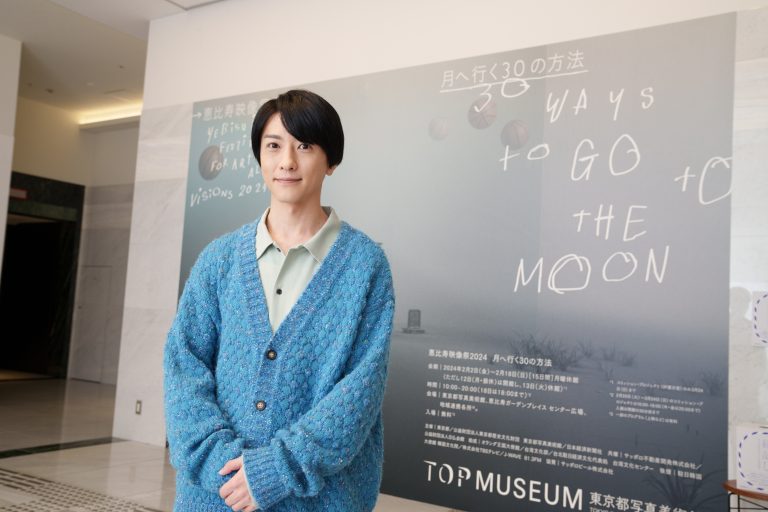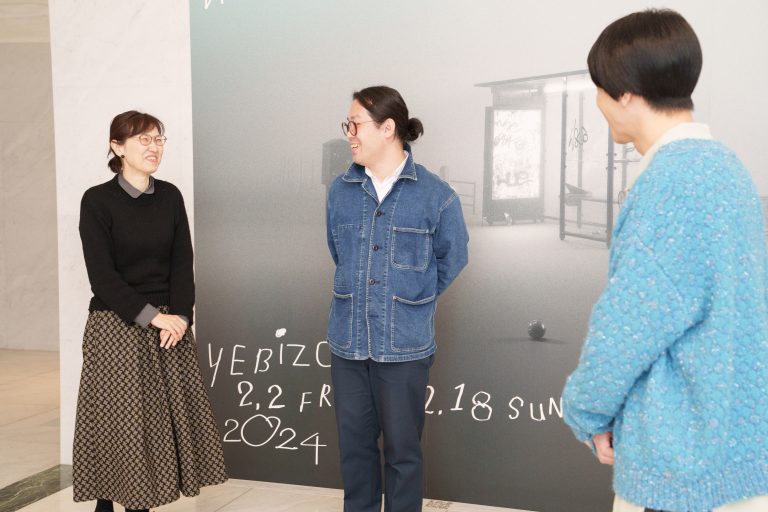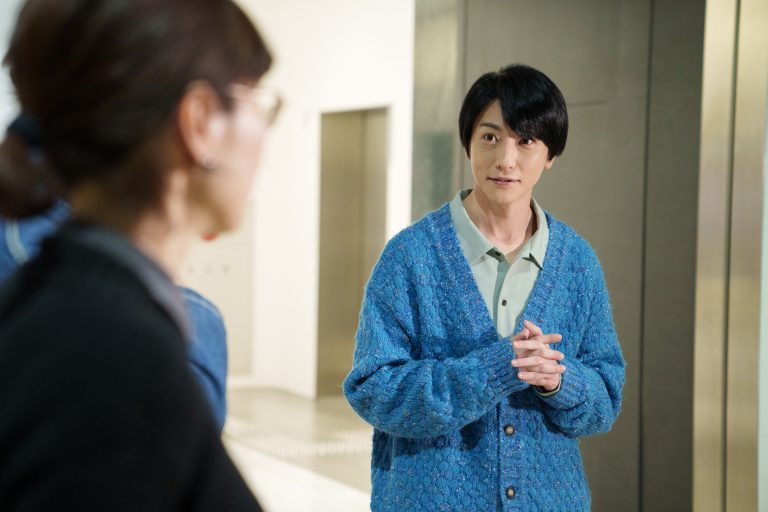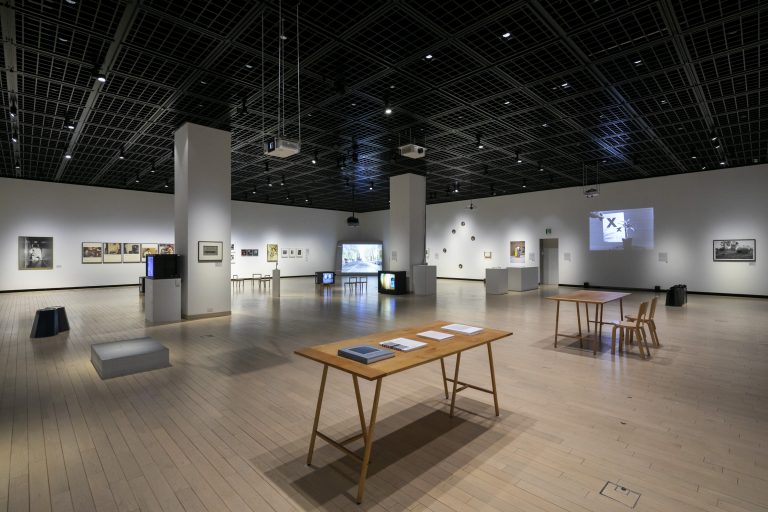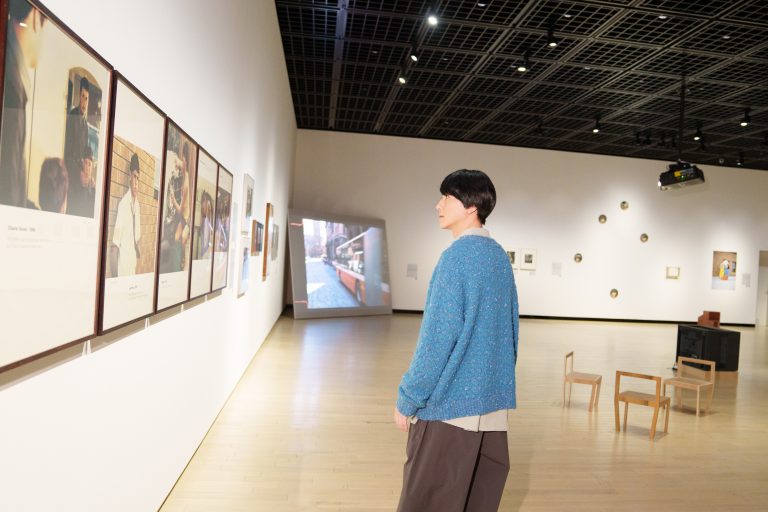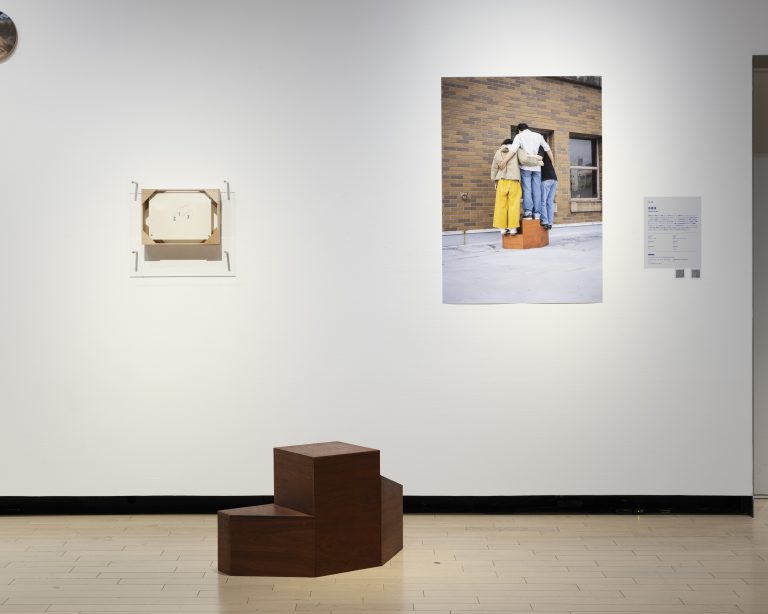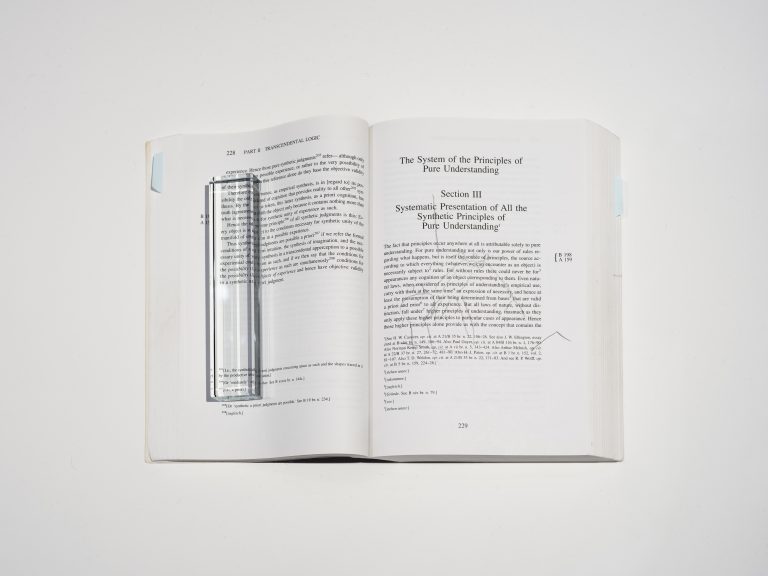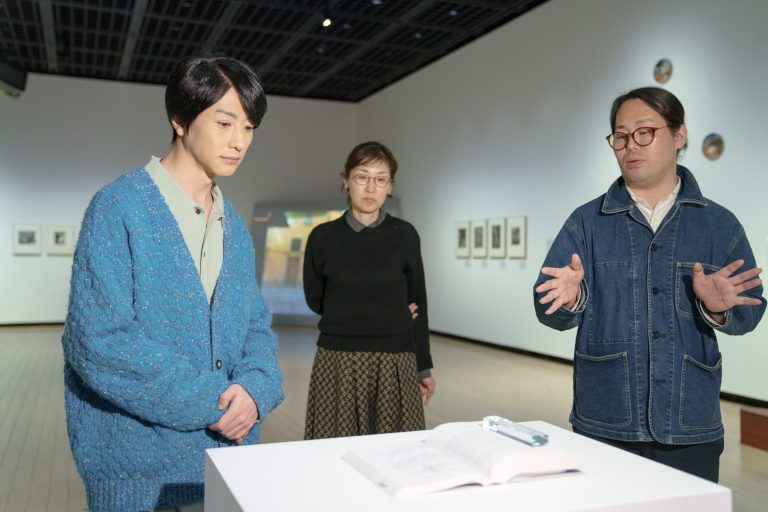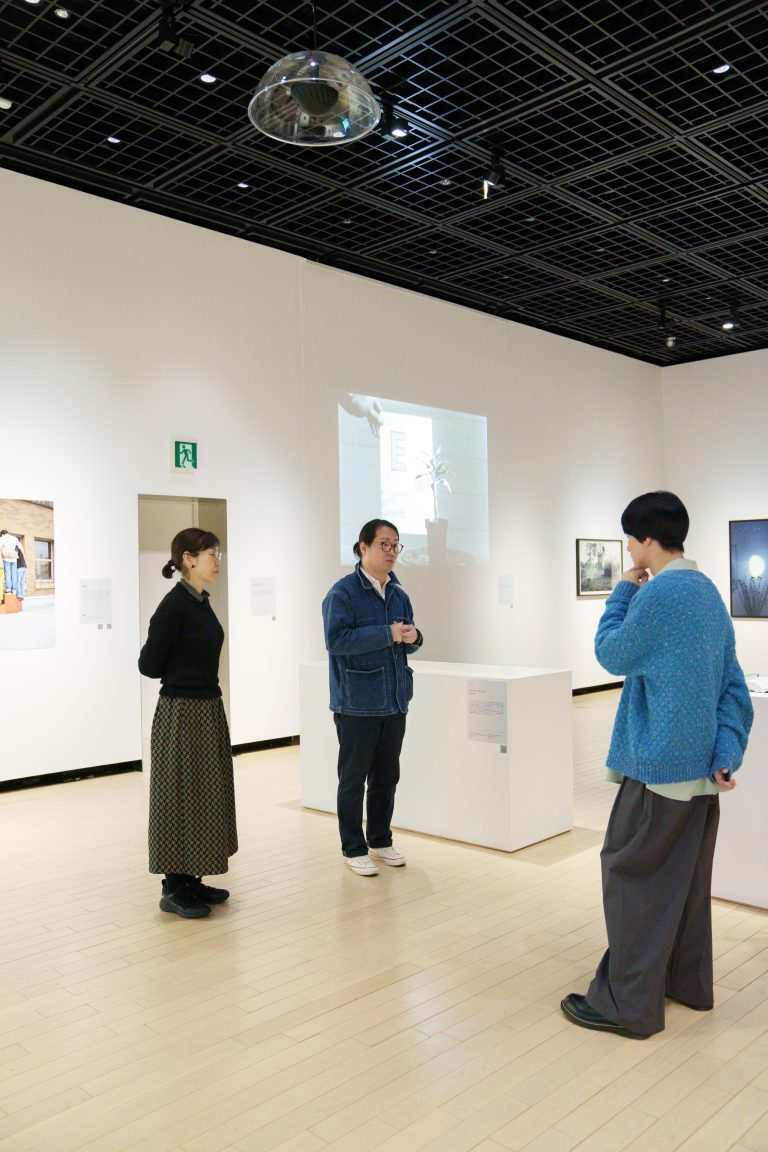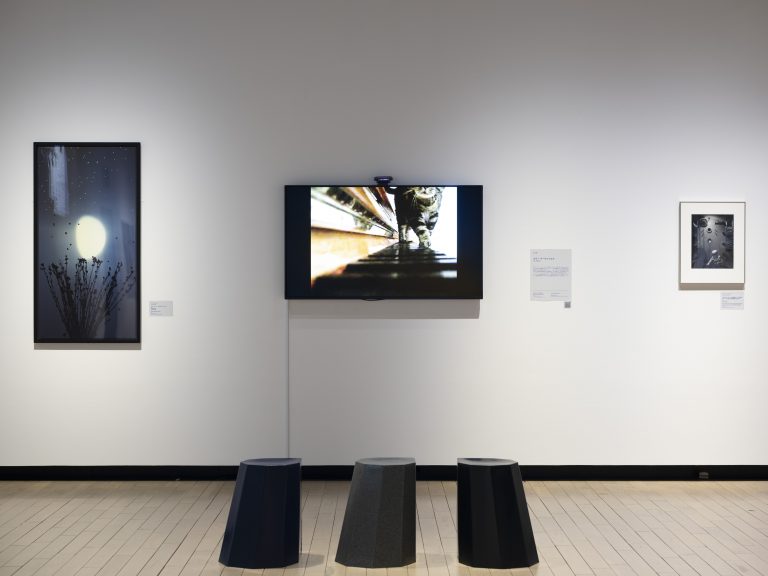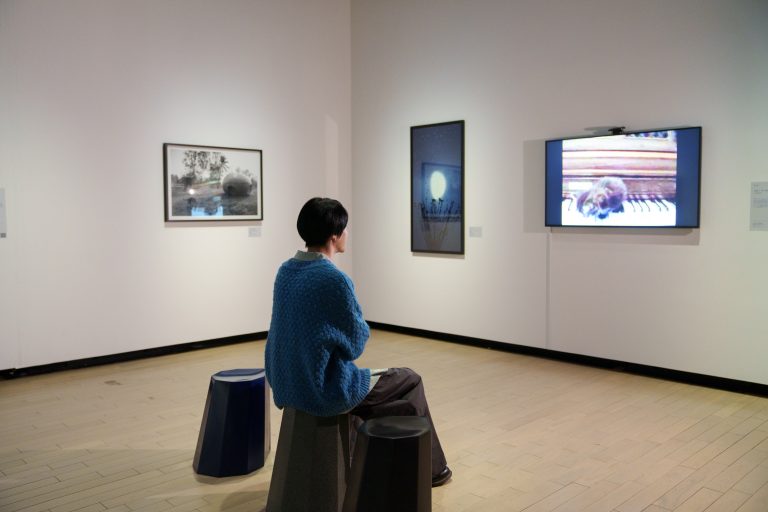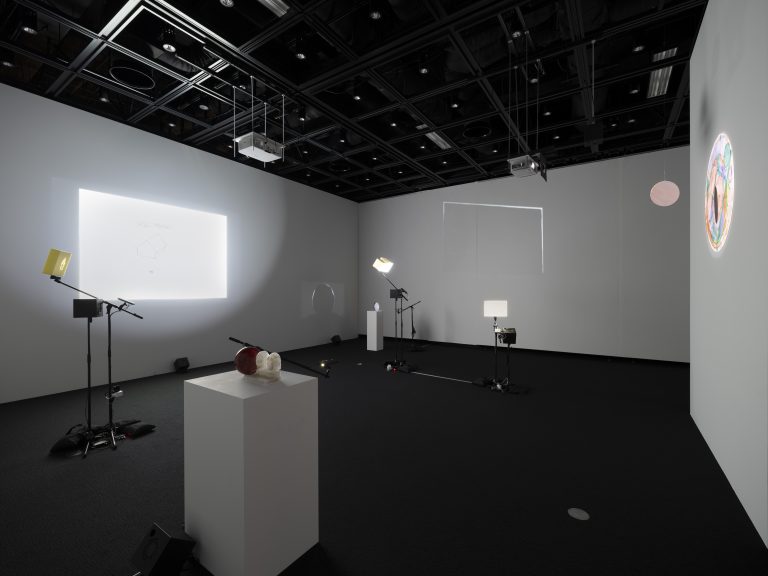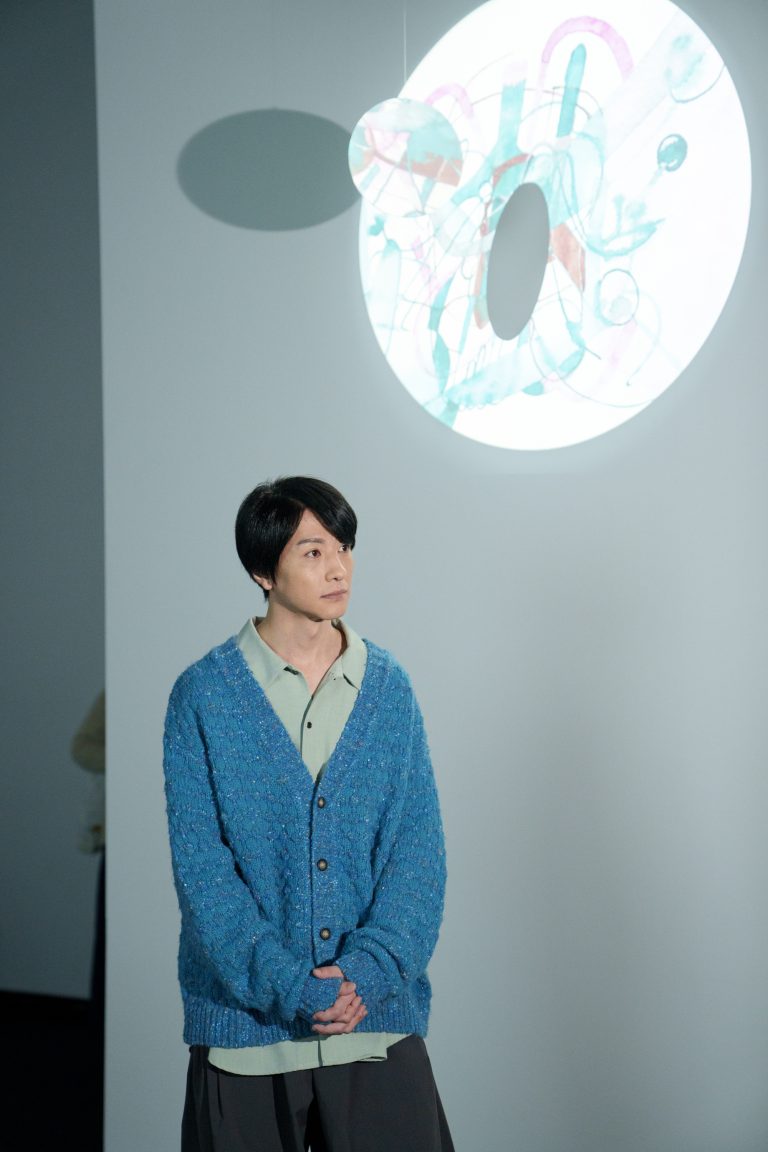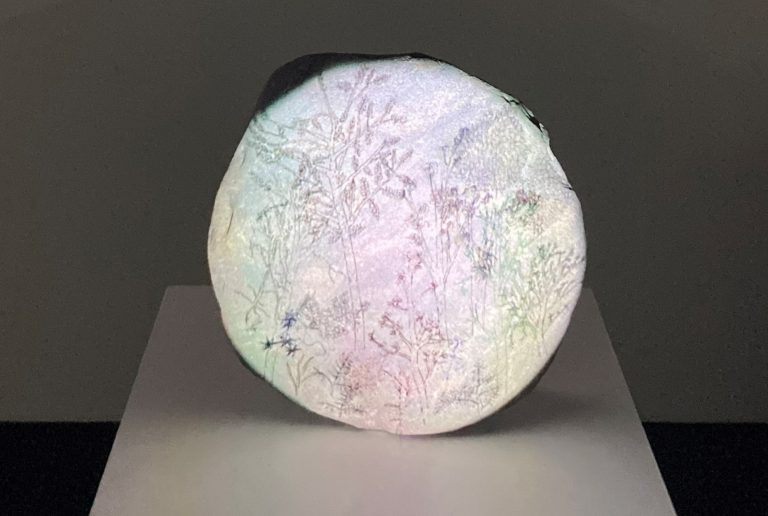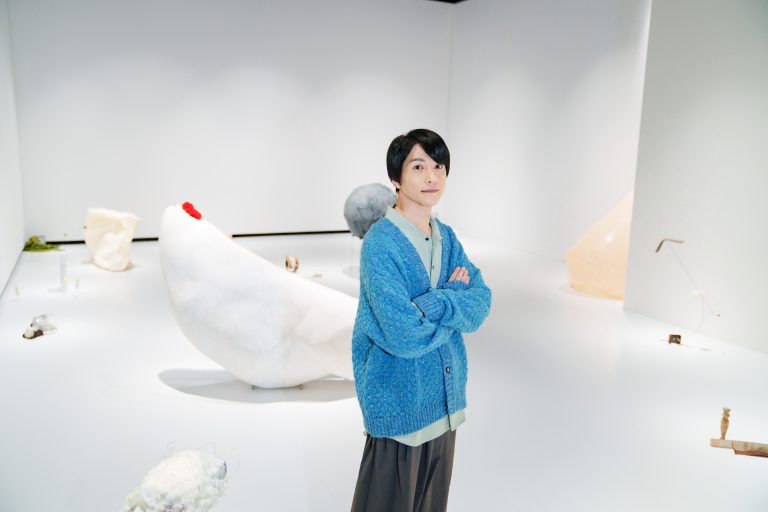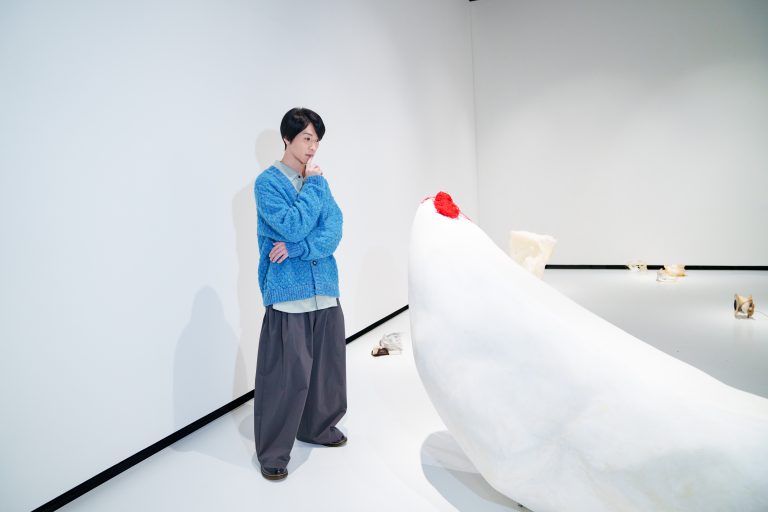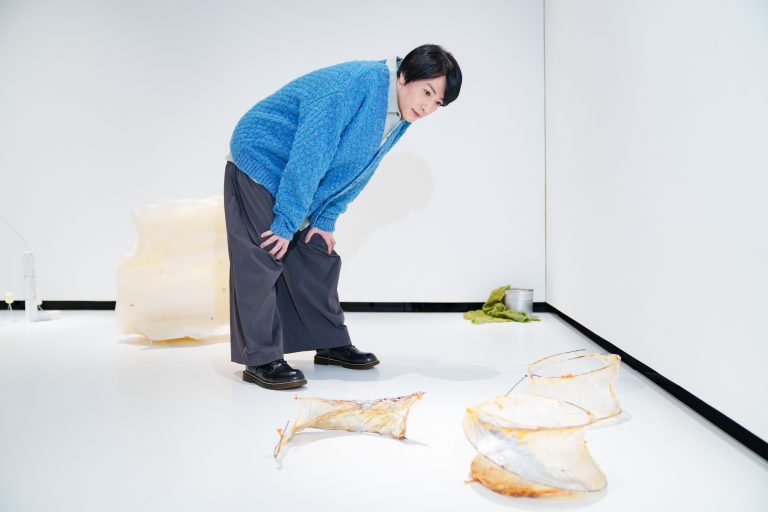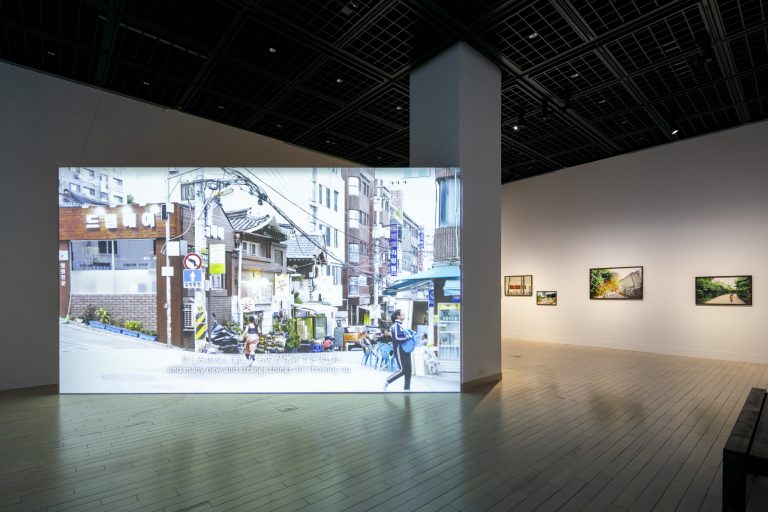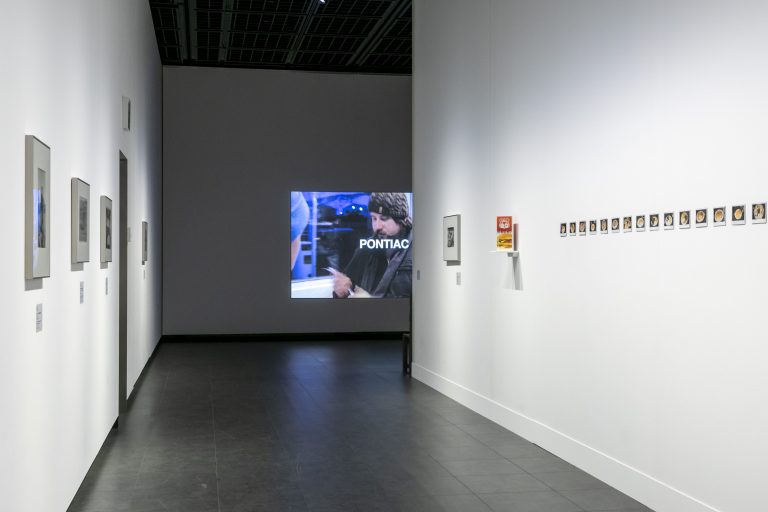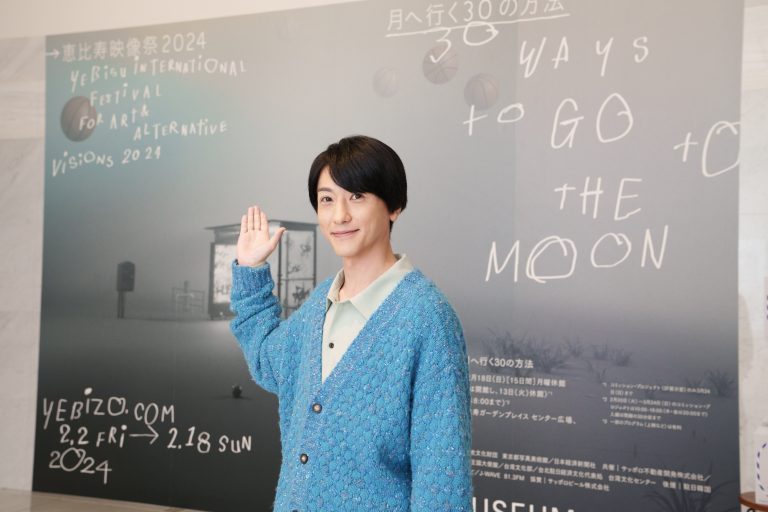![]()
![]()
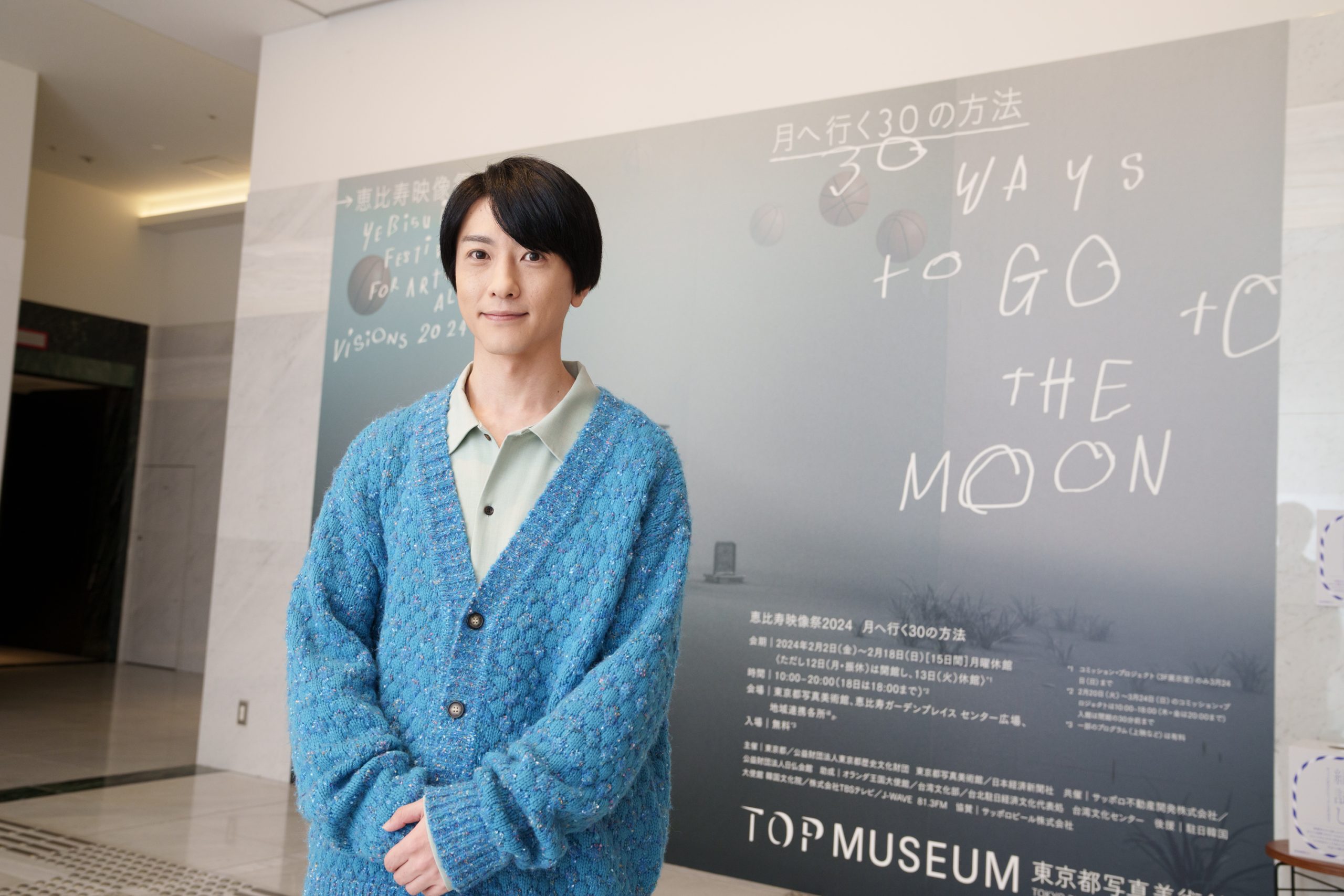
Actor Hiroki Suzuki
Actor Hiroki Suzuki visits the Yebisu International Festival for Art & Alternative Visions 2024.
What inspired the theme 30 Ways to Go to the Moon?
The Yebisu International Festival for Art & Alternative Visions is an international festival of moving images and art that has been held primarily at the Tokyo Photographic Art Museum since its inception in 2009. This year, the sixteenth edition of the festival was held for 15 days from February 2 to 18, 2024*, under the theme 30 Ways to Go to the Moon. In addition to exhibitions, the festival featured screenings, live performances, and a variety of other events. Actor Hiroki Suzuki, whose career spans a wide range of film and stage productions, visited the festival. While he viewed the exhibition at the Tokyo Photographic Art Museum, two of the people responsible for planning the festival, Hiroko Tasaka, curator of the Tokyo Photographic Art Museum, and co-curator Hikotaro Kanehira, provided commentary.
*The Commission Project on the third floor remains open through Sunday, March 24.
Suzuki: I’ve narrated audio guides for art exhibitions before, but this is my first time at a “moving image” festival.
Tasaka: The Yebisu International Festival for Art & Alternative Visions has been held since 2009. This year marks its sixteenth year as a festival for art and moving images. Centered around the Tokyo Photographic Art Museum, the festival is held for 15 days at the Center Square of Yebisu Garden Place and various other locations in collaboration with local venues. This year, we invited Hikotaro Kanehira as co-curator to help bring the project to fruition.
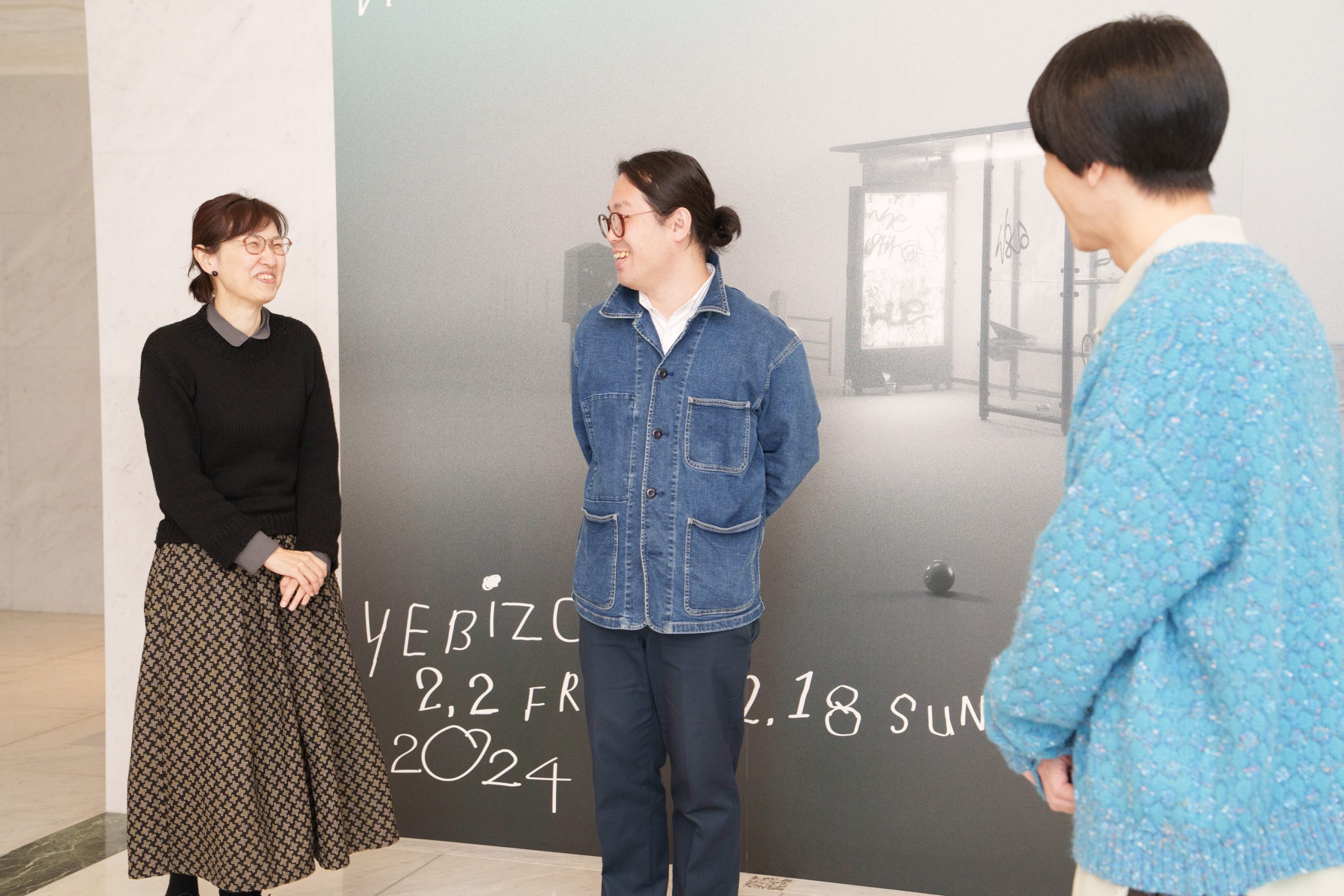
Suzuki: So this art festival has been going on for a while! I was intrigued by the phrase used for this year’s theme, 30 Ways to Go to the Moon. I wondered what exactly it was about. It’s not like there are 30 artists participating or 30 specific ways to get to the moon that are on display, like riding in a space shuttle.
Kanehira: 30 Ways to Go to the Moon comes from the title of an artwork and exhibition of the same name by Nobuko Tsuchiya, one of the artists who participated in the Yebisu International Festival for Art & Alternative Visions 2024. We designed this exhibition to provide clues about what kind of future we should imagine, how we should live, and where we should go, based on artists’ ideas, practices, and works, rather than on advances in science, technology, and theory.
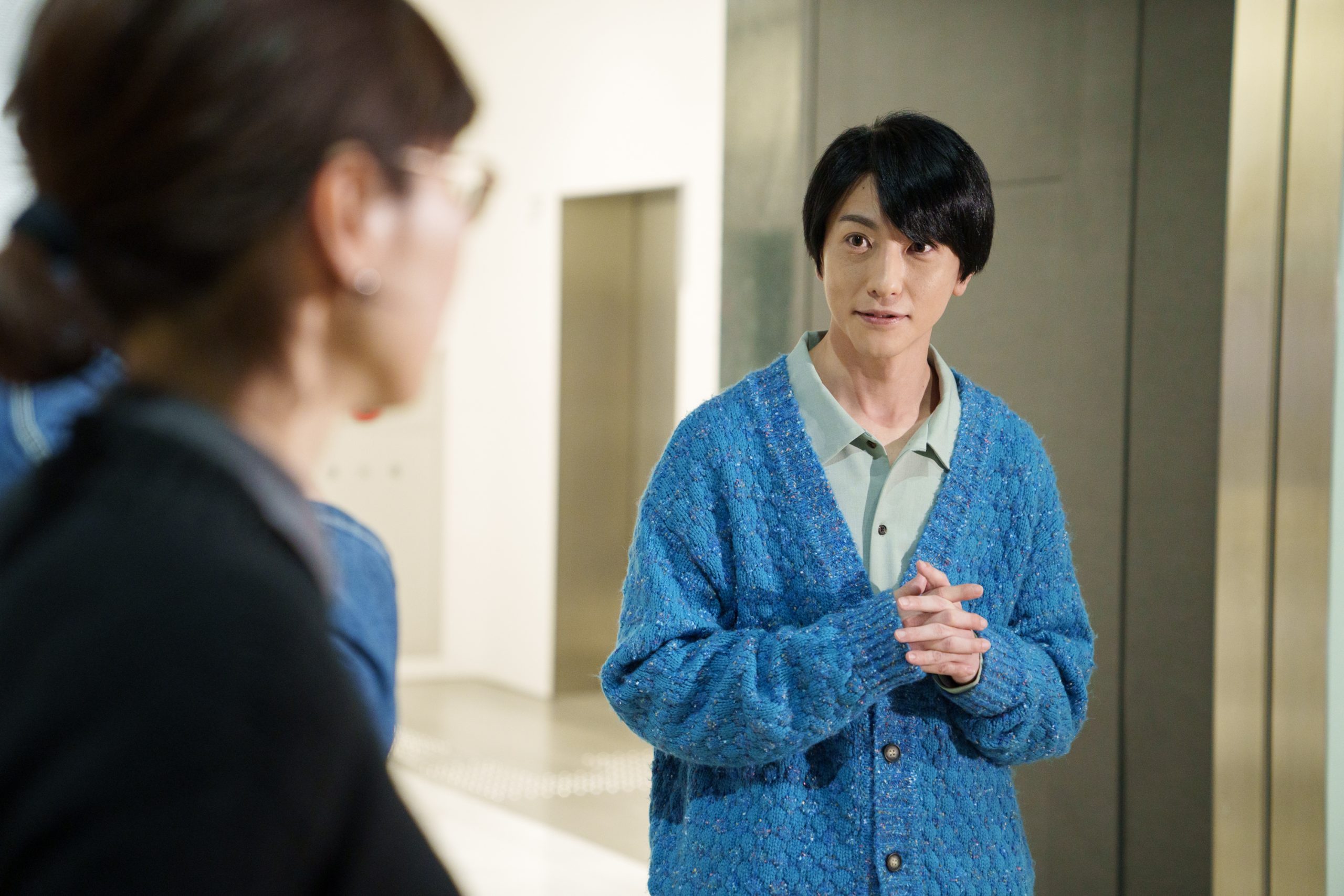 Suzuki says he was intrigued by the theme 30 Ways to Go to the Moon
Suzuki says he was intrigued by the theme 30 Ways to Go to the Moon
Suzuki: So the moon is not a specific place, but an invitation to think about our way of life and direction. It’s a deeper theme than I had imagined.
Tasaka: The moon is something that everyone is aware of, but is perceived and seen differently depending on the person or country. In Japan, a rabbit is said to live on the moon. In other countries, other creatures are said to live there. Our hope is that the audience will be able to reflect on the fact that there are many different ways of seeing and feeling. Shall we enter the exhibition? Let’s start with the exhibits on the second floor.
Focusing on the “one-time nature” of moving images that can only be experienced here and now
Suzuki: Whoa, there are no walls! The entire room is arranged like the set of a stage production. This space alone seems to be telling its own story.
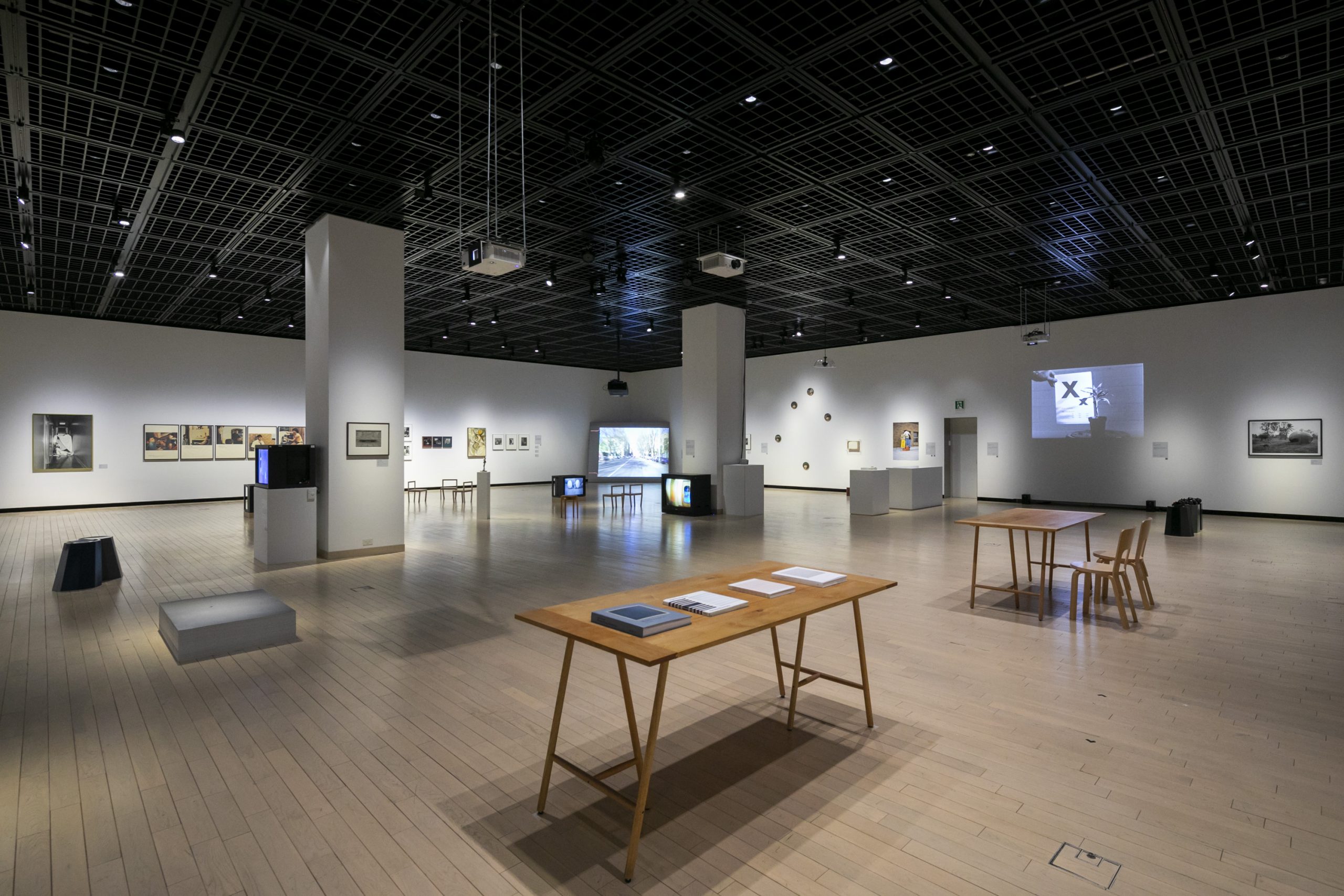
Kanehira: We want visitors to see the exhibits in whatever order they want to, so we haven’t set up a particular route. This year’s festival focuses on the “one-time nature of moving images.” Performances, live events, talks, and other programs will also be held in this exhibition space.
Suzuki: Are you saying that if I were to come here tomorrow, I might not be able to see the same thing that I saw today? If that’s the case, then I’d better cherish this day, this very moment. I’ll start looking around at everything… Right away, this one caught my eye.
Kanehira: That’s from a series called “Scarred for Life” by Tracey Moffatt. The scene depicts a boy being scolded by his father for dressing up to play Dorothy in The Wizard of Oz. Moffatt refers the format of photos in Life magazine to capture these moments of trauma caused by unconscious bias and discrimination that exist even within the family.
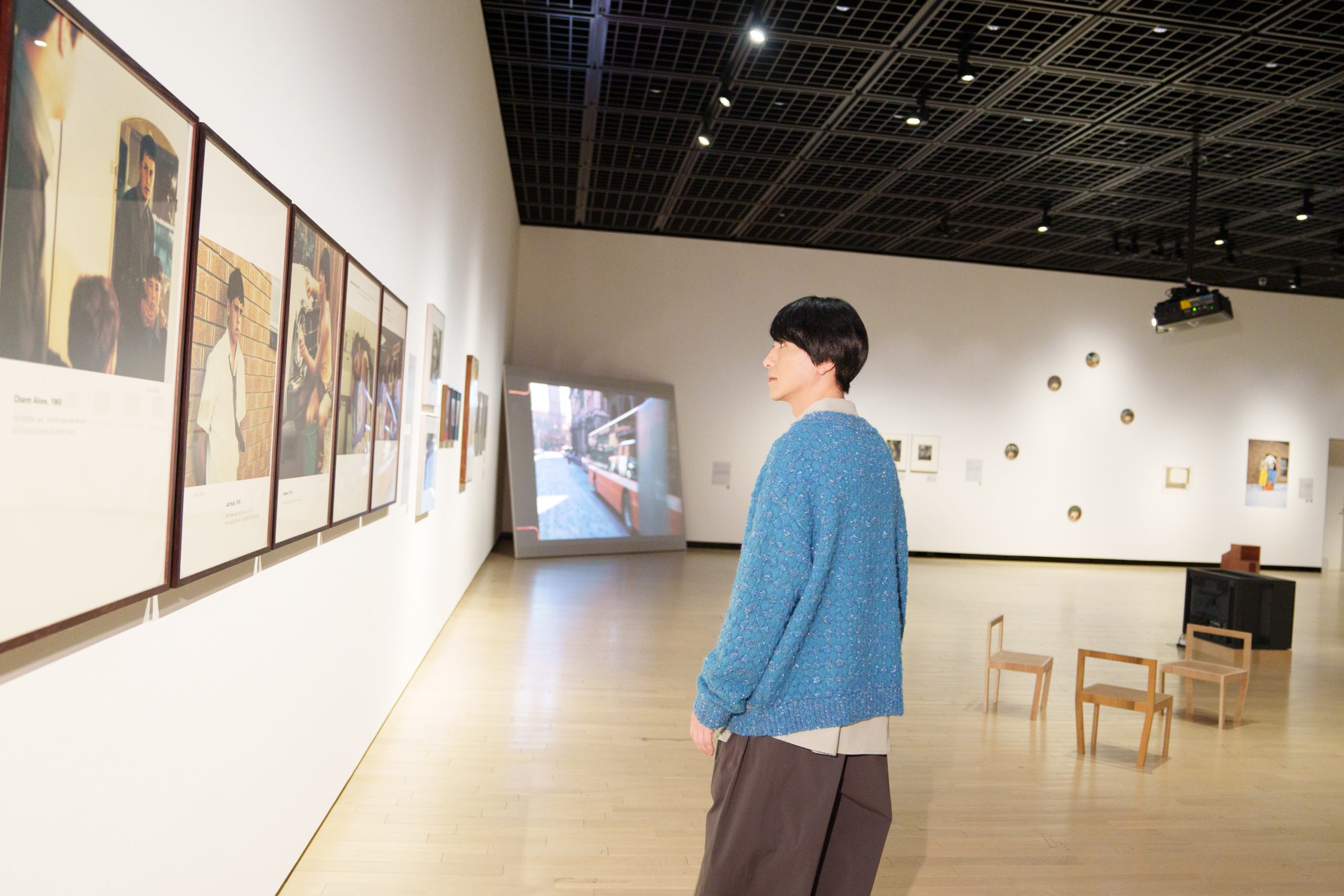
Suzuki: I thought it looked very stylish, but hearing that immediately changed my perspective.
Kanehira: This work is very popular, and people who come to see it often post it on Instagram and other social media. But there’s actually something a bit discomforting about it.
Suzuki: It’s definitely important to know the intent that went into making the moving images and photographs.
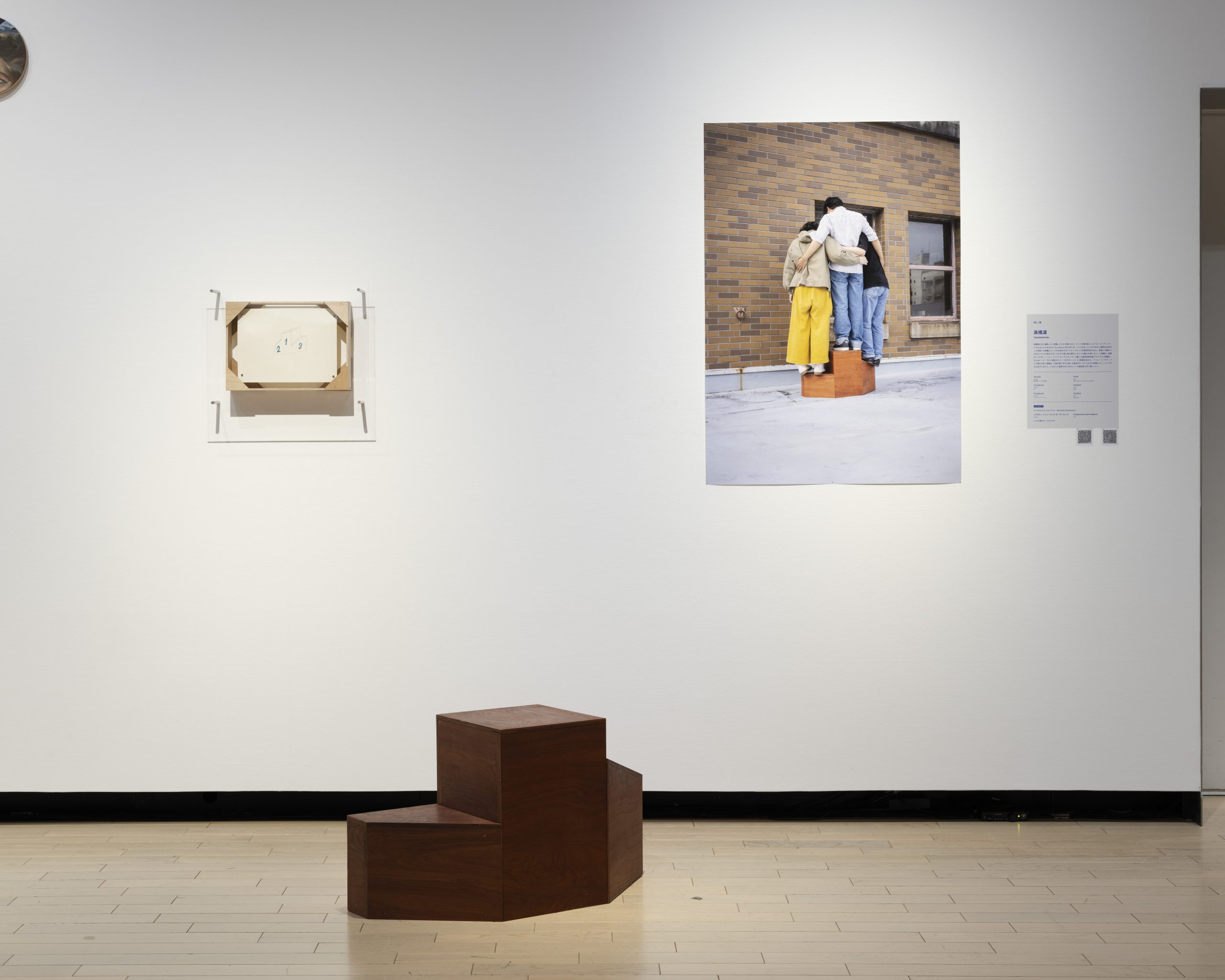 (In the foreground) Installation view of Sculpture by Rin Takahashi Photo by Shu Nakagawa
(In the foreground) Installation view of Sculpture by Rin Takahashi Photo by Shu Nakagawa
Suzuki: Although this festival focuses on the moving images, it’s interesting to see that there are three-dimensional works of art in the venue, too. What is this piece on the floor?
Tasaka: That’s Sculpture by Rin Takahashi. It’s a podium, but one that you can’t stand on alone.
Suzuki: There’s a picture behind it of three people actually standing on the podium. It really looks like they’re going to fall off if they don’t cling to each other (laughs). All three of them can’t stand up unless they cooperate with each other.
Tasaka: The concept is to draw attention to relationships and collaboration with others through art. During the exhibition, visitors who come alone will be able to stand on the podium with the venue’s volunteer staff.
Suzuki: I attempted it myself with the staff, but it really was hard to stay on top! What is this work over here about? It looks like something drawn in a book.
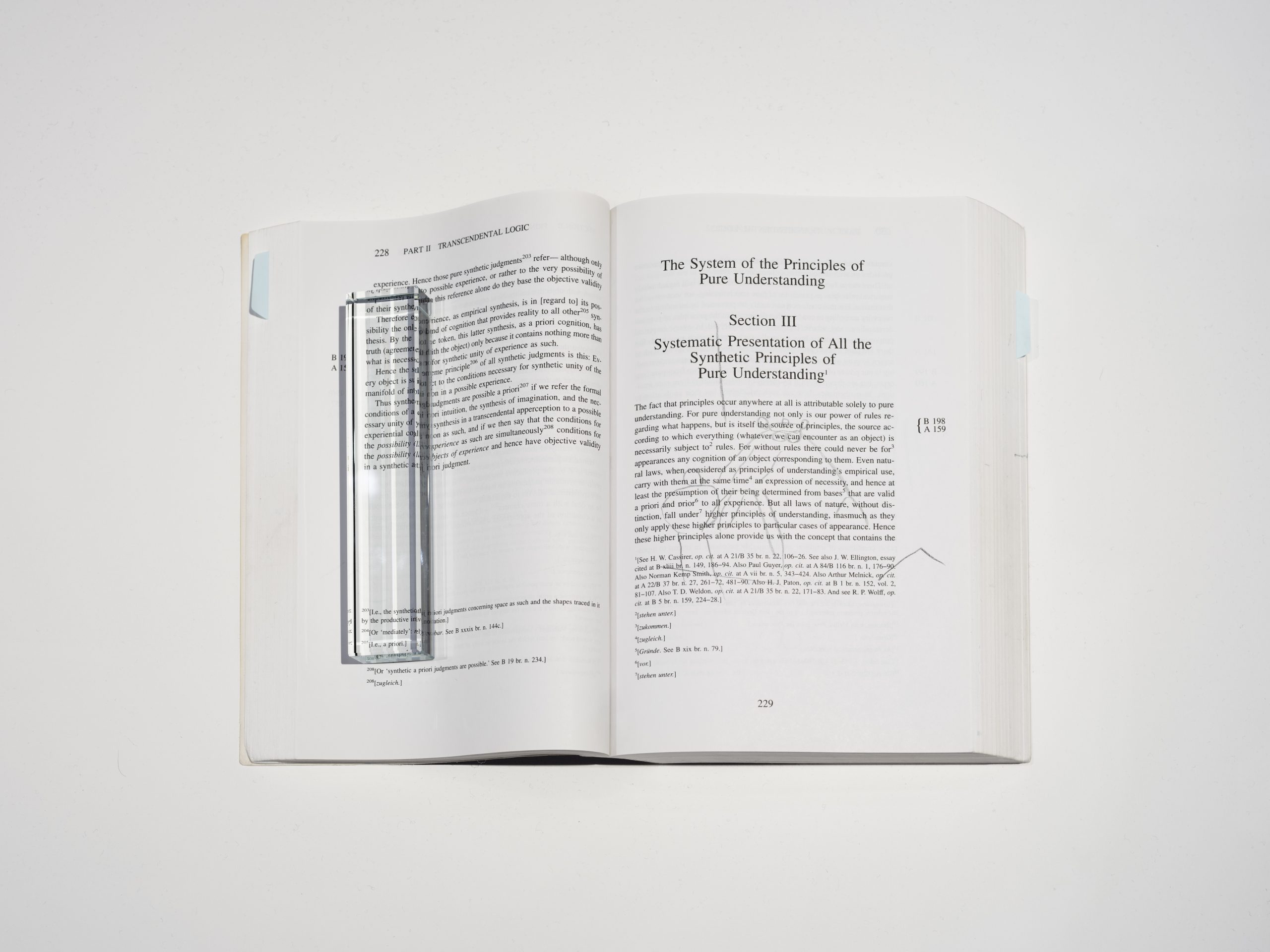 Installation view of “super (string drawing) theory” 2023.1.31– by Kaoru Arima Photo by Shu Nakagawa
Installation view of “super (string drawing) theory” 2023.1.31– by Kaoru Arima Photo by Shu Nakagawa
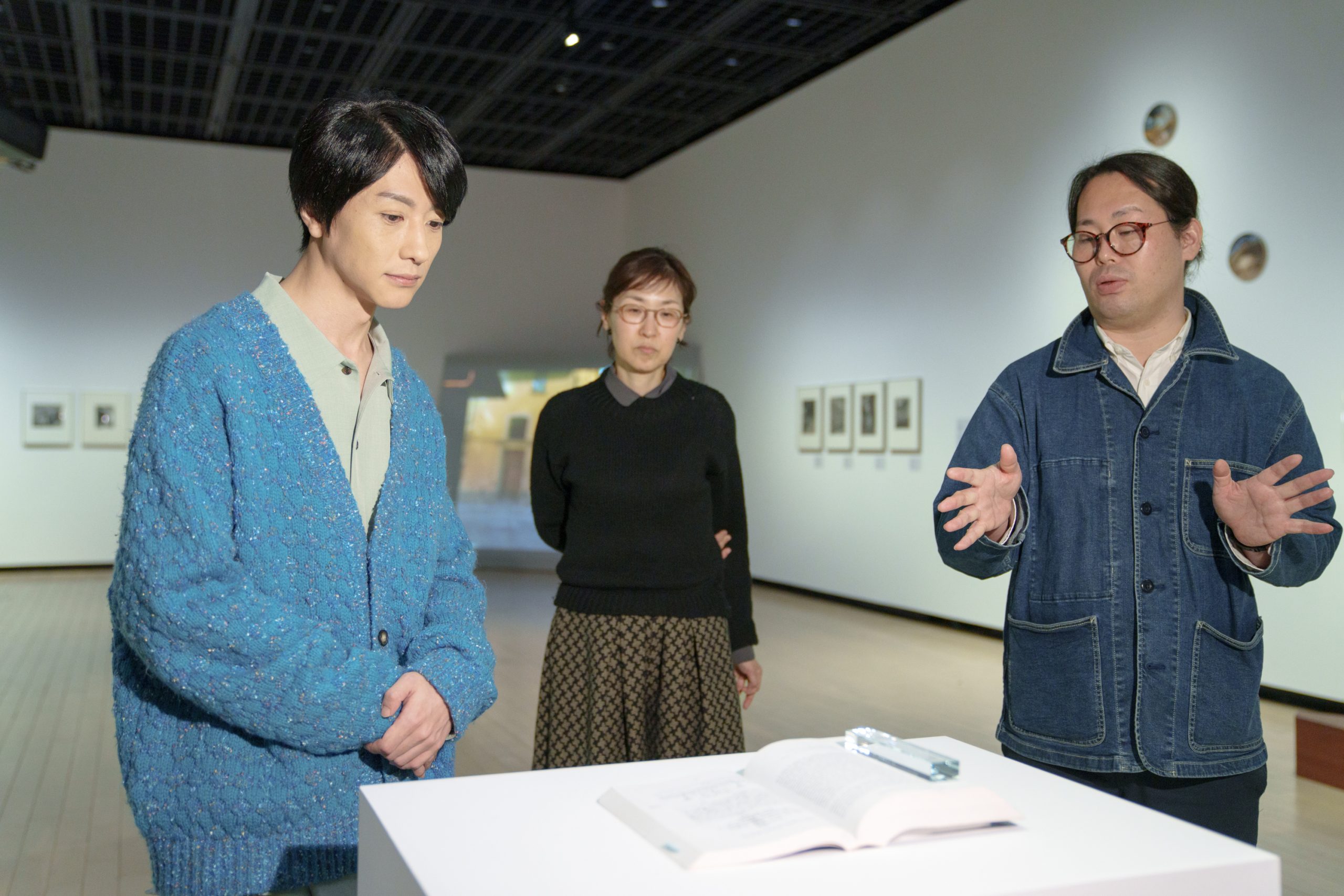
Kanehira: Arima’s “super (string drawing) theory” 2023.1.31– is a work consisting of doodles drawn on every page of the philosophical book Critique of Pure Reason by Immanuel Kant. The staff turns the pages at regular intervals, so viewers can’t see all the artwork in the book.
Suzuki: It’s truly a “one-time” experience. Each page can only be seen by those who were there at the time. And the drawing itself is simple and sparks the imagination in many ways. What is depicted on the pages I haven’t seen? All kinds of visions come to mind.
Suzuki: By the way, I’ve been hearing a cat meowing for a while…
Kanehira: That’s Interview with a Cat, a work that consists solely of the voices of Marcel Broodthaers and a cat coming from the speakers on the ceiling. The artist asks the cat, “What is art?” only to receive nothing but “meow” in response. This work is a recording of that interview. The cat may not be communicating in words, but we can think about and imagine what is being said in the spaces between each meow.
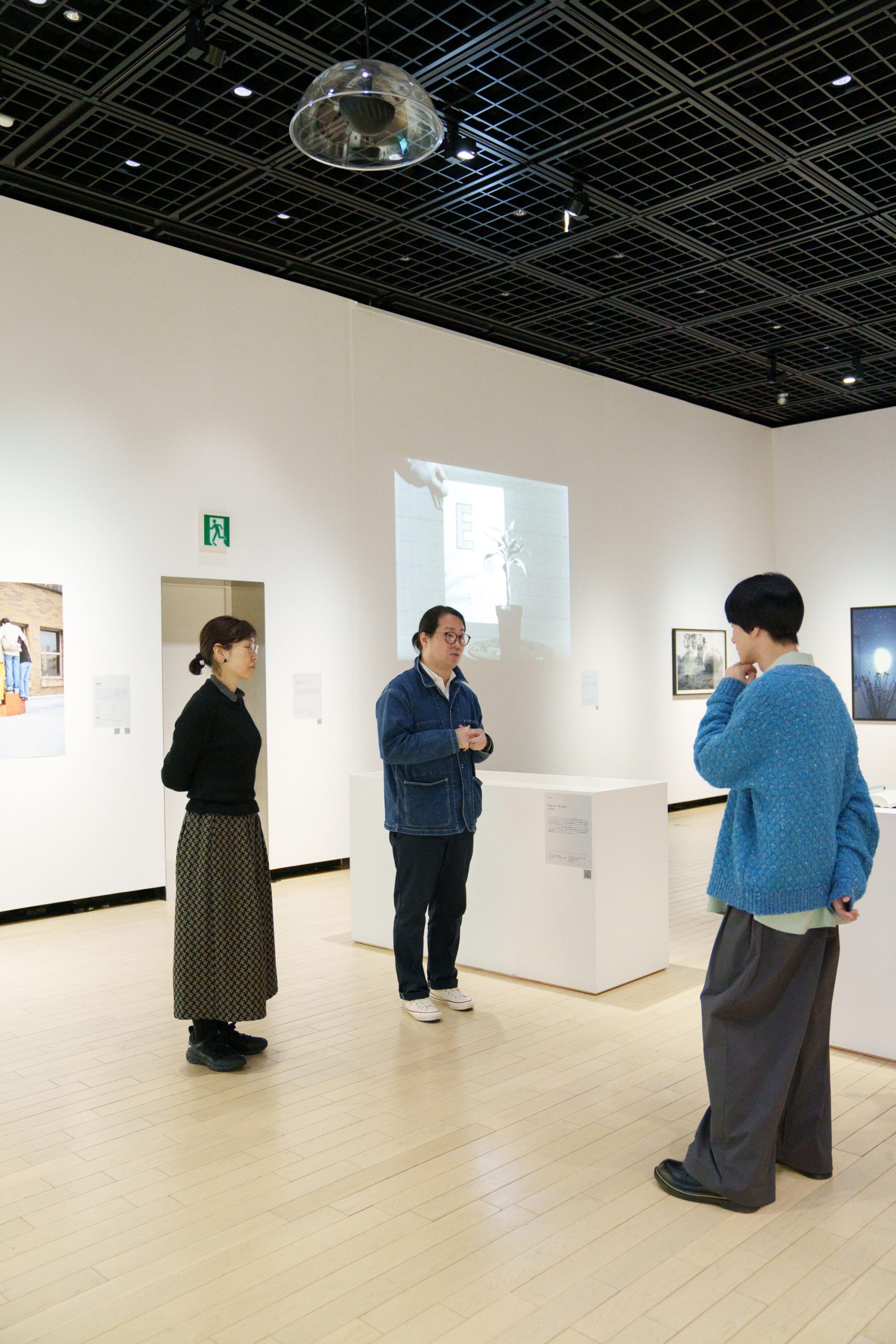 Marcel Broodthaers’ Interview with a Cat is a unique work in which the voice of a cat can be heard from speakers on the ceiling.
Marcel Broodthaers’ Interview with a Cat is a unique work in which the voice of a cat can be heard from speakers on the ceiling.
Suzuki: It may be true that cats don’t understand our words, but the fact that they say “meow” when we speak to them suggests that they may at least understand our intentions. Maybe we are the ones who just don’t understand them.
Tasaka: Or maybe we communicate with other people in the same way, as well.
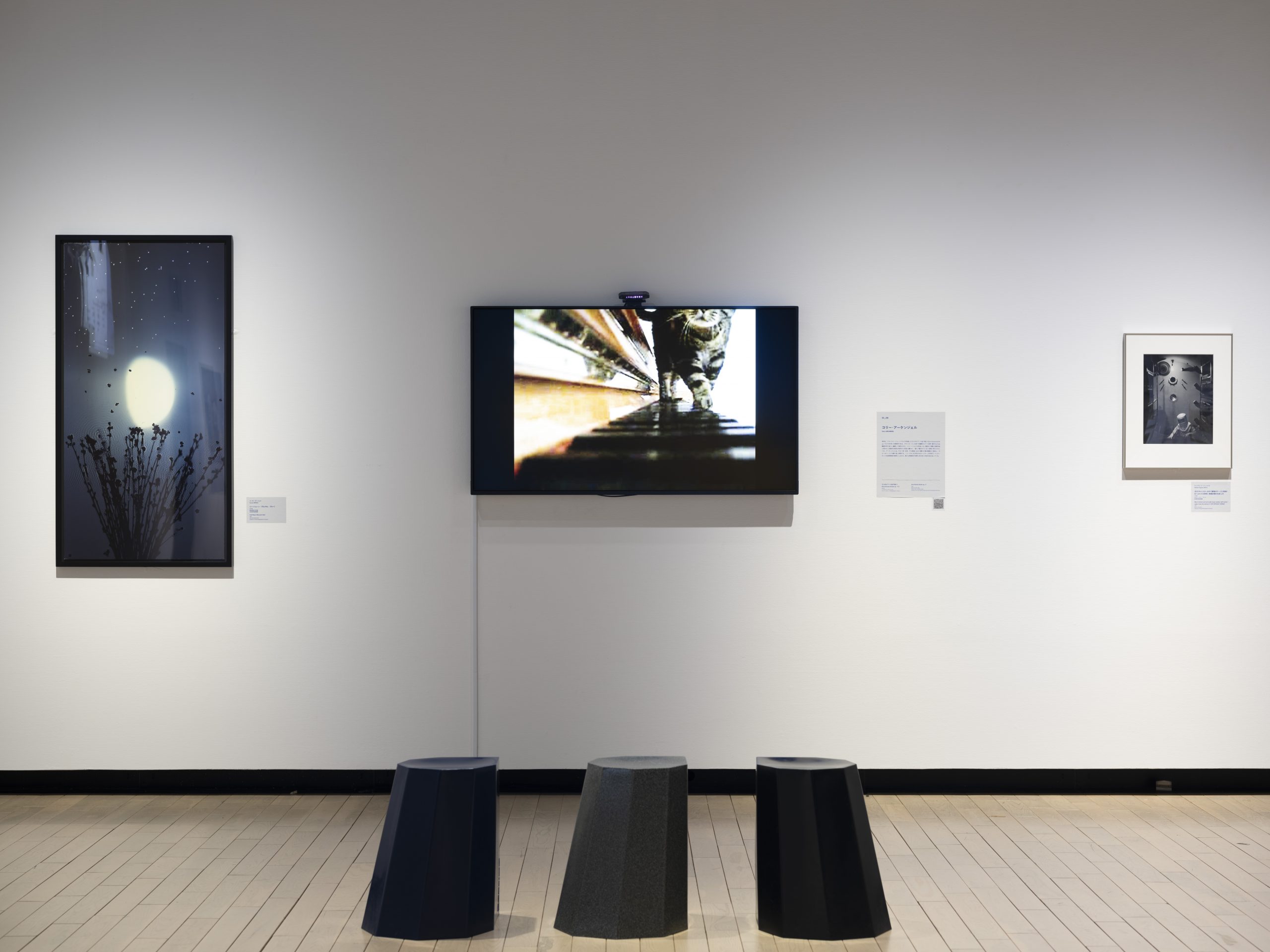 Installation view of Drei Klavierstücke, Op. 11 by Cory Arcangel (center) Photo by Shu Nakagawa
Installation view of Drei Klavierstücke, Op. 11 by Cory Arcangel (center) Photo by Shu Nakagawa
Suzuki: This one has cats in it, too.
Kanehira: Corey Arcangel’s Drei Klavierstücke, Op. 11 (Three Piano Pieces) is a reworking of a musical composition of the same name by Arnold Schoenberg. Arcangel collected YouTube videos of cats playing pianos and edited them together to perform the piece.
Suzuki: The cat owners who uploaded those videos obviously had no idea that they would be used this way.
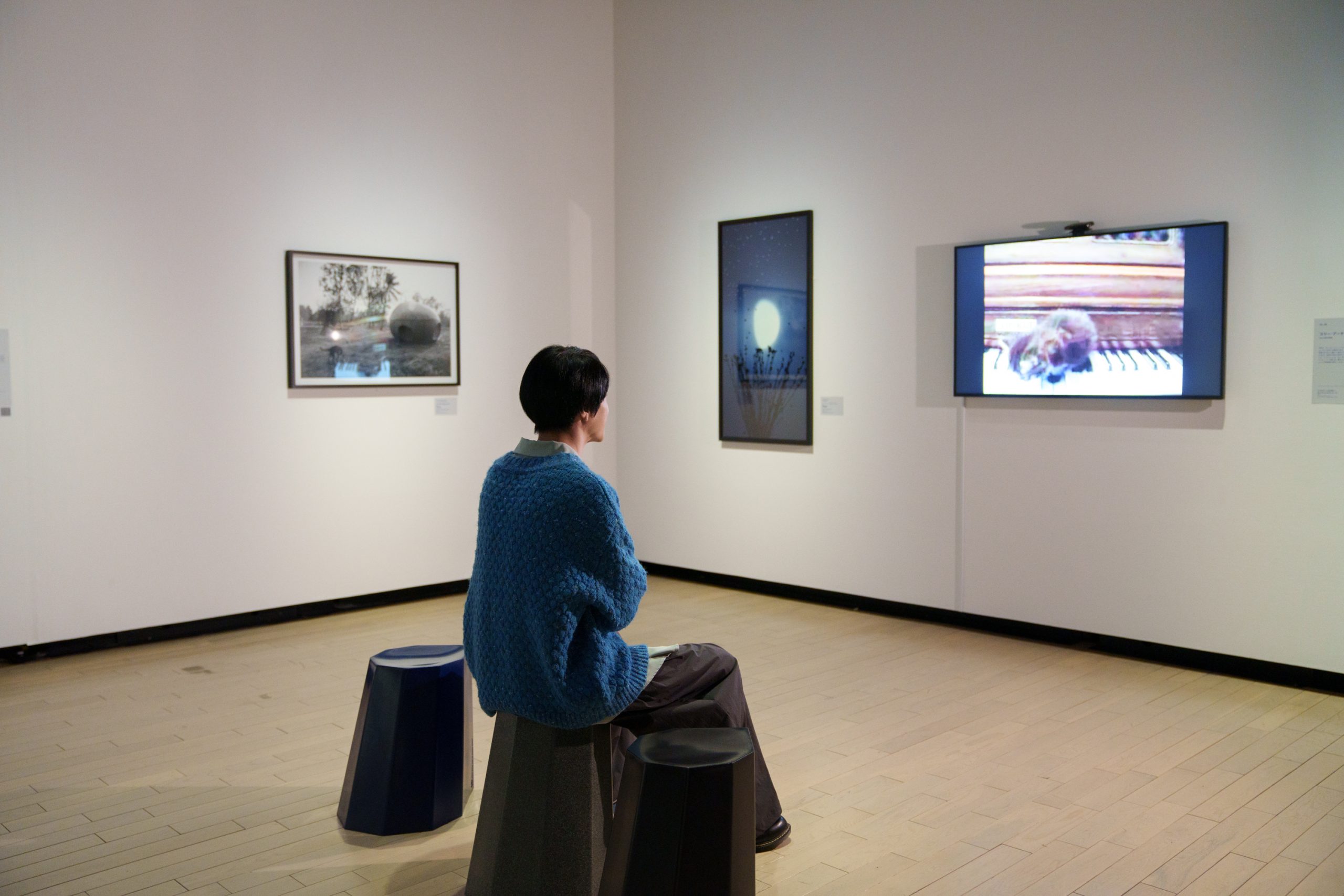
Tasaka: The cats seem to be playing the piano in a random, disorganized manner, but if you just listen to the sounds, they’re really making Schoenberg’s music.
Kanehira: Since many of the works in the exhibition feature cats, people tend to think that we’re cat people. I want to make it very clear that I’m a dog person! (Laughs.)
A surreal basement-floor exhibition space: “I could stay here all day!”
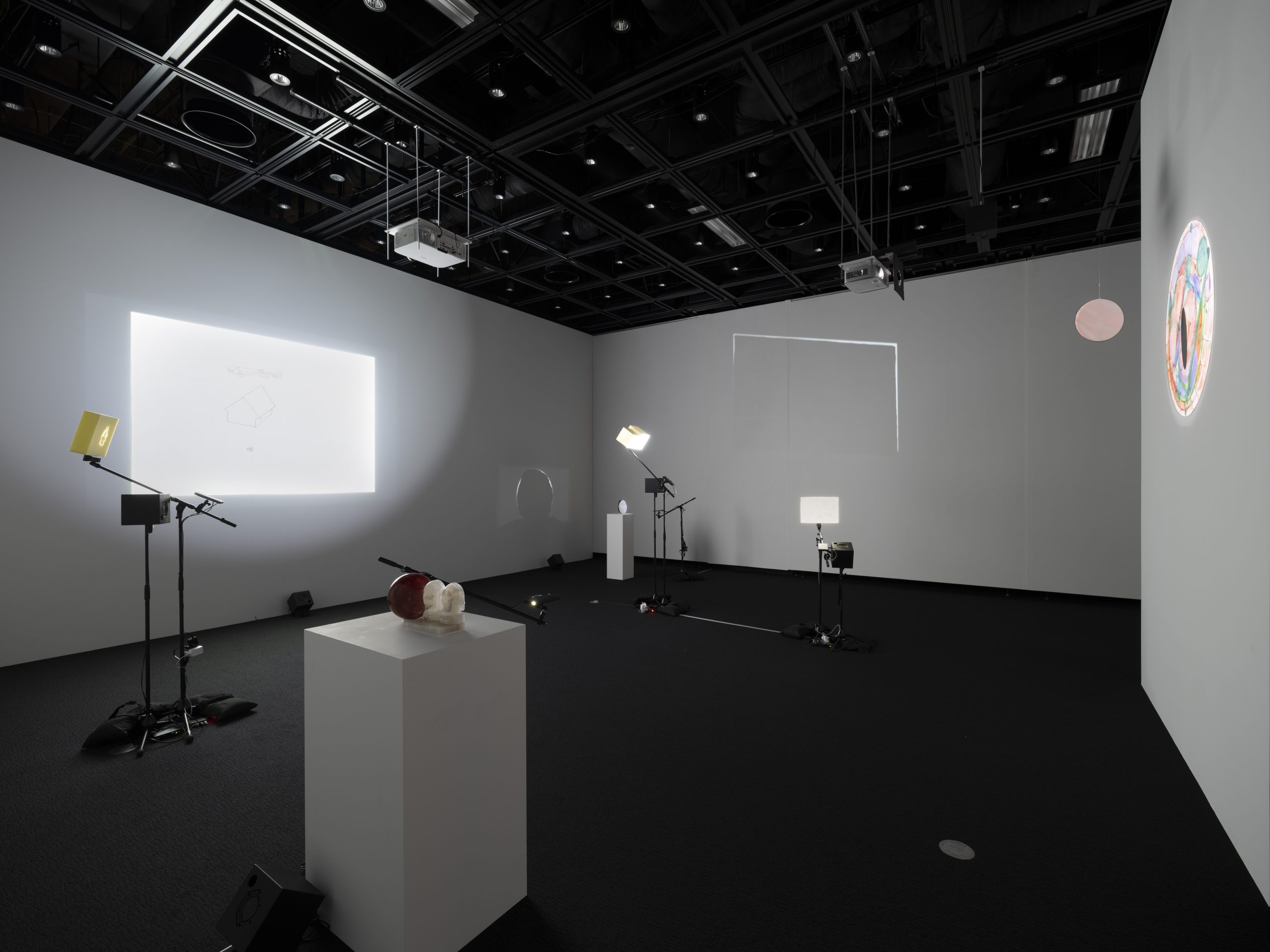 Installation view of The state one reaches by the age of 9 by Ryoko Aoki and Zon Ito Photo by Shu Nakagawa
Installation view of The state one reaches by the age of 9 by Ryoko Aoki and Zon Ito Photo by Shu Nakagawa
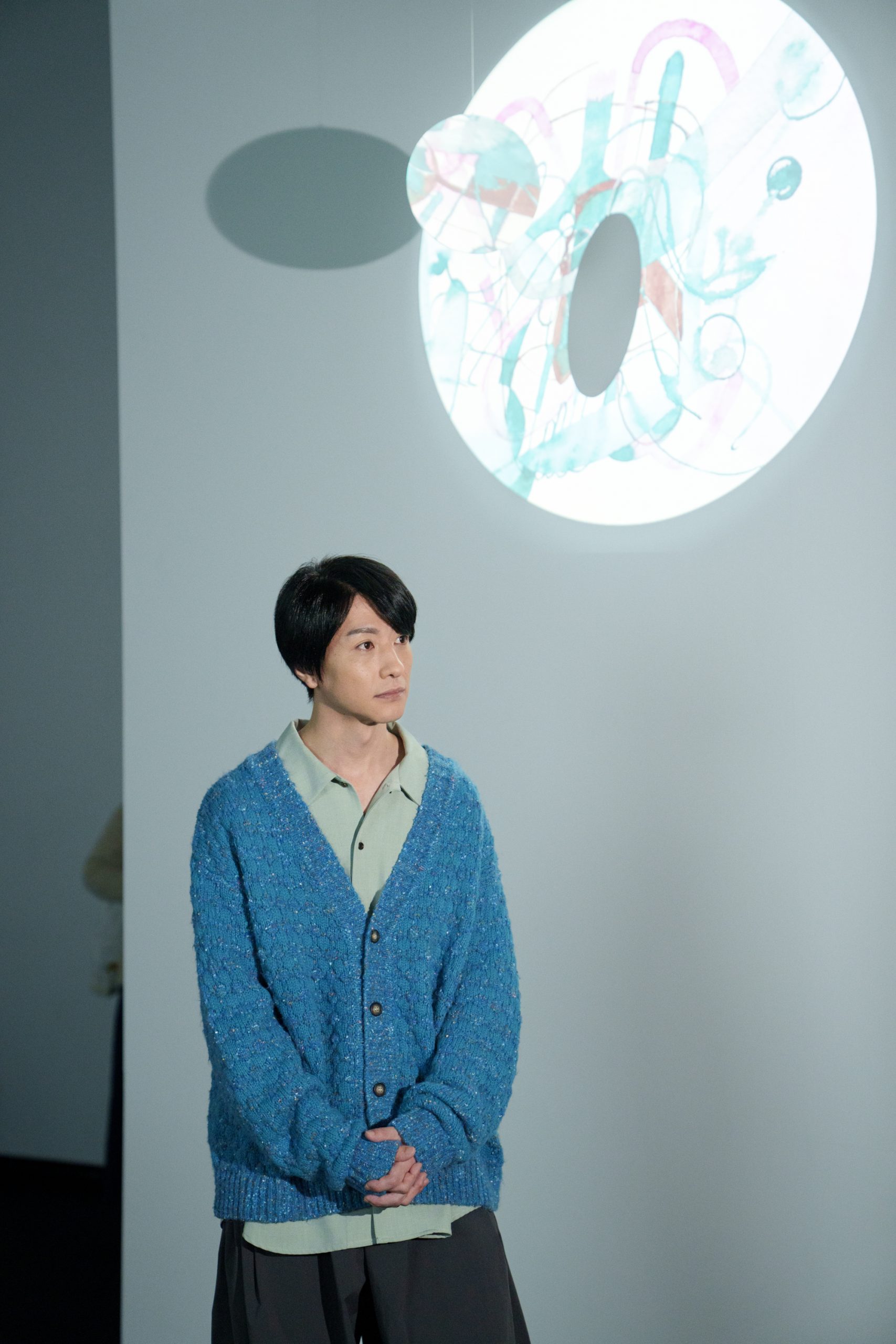
Suzuki: The basement-floor exhibition is different from the one on the second floor. It’s very surreal.
Tasaka: The state one reaches by the age of 9 by Ryoko Aoki and Zon Ito is an installation that was inspired by an essay by mathematician Kiyoshi Oka. It consists of animated hand-drawn images and sounds.
Kanehira: Each of the seven moving images has its own sound, but because they are not synchronized, the timing of the images and sounds varies, creating a different impression each time the works are viewed.
Suzuki: They’re using sponges and rocks as screens to project the images! And the images are so magical; I can’t take my eyes off them. I could stay here all day.
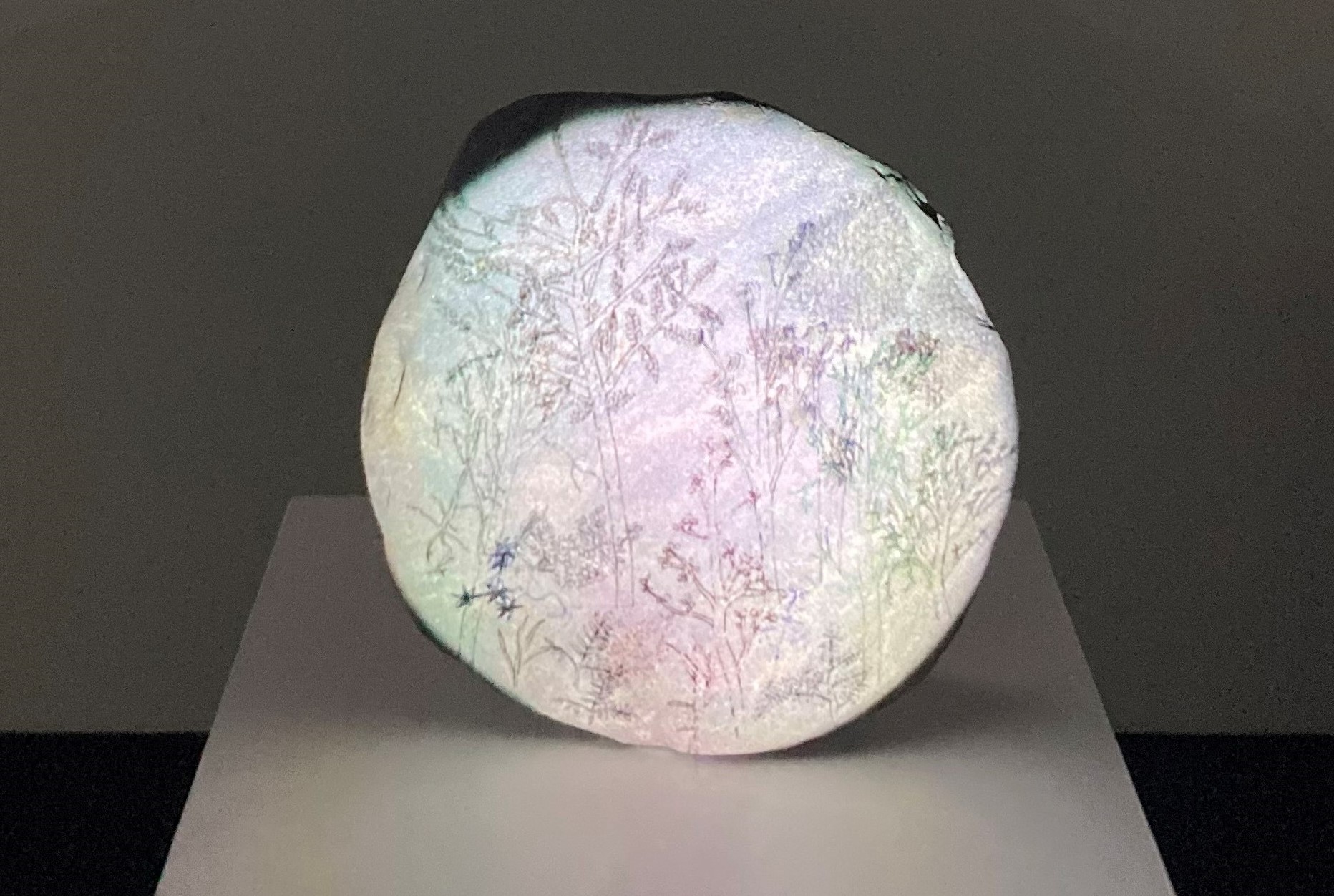 Installation view of The state one reaches by the age of 9 by Ryoko Aoki and Zon Ito. Animated hand-drawn images are projected onto a rock as if it were a screen.
Installation view of The state one reaches by the age of 9 by Ryoko Aoki and Zon Ito. Animated hand-drawn images are projected onto a rock as if it were a screen.
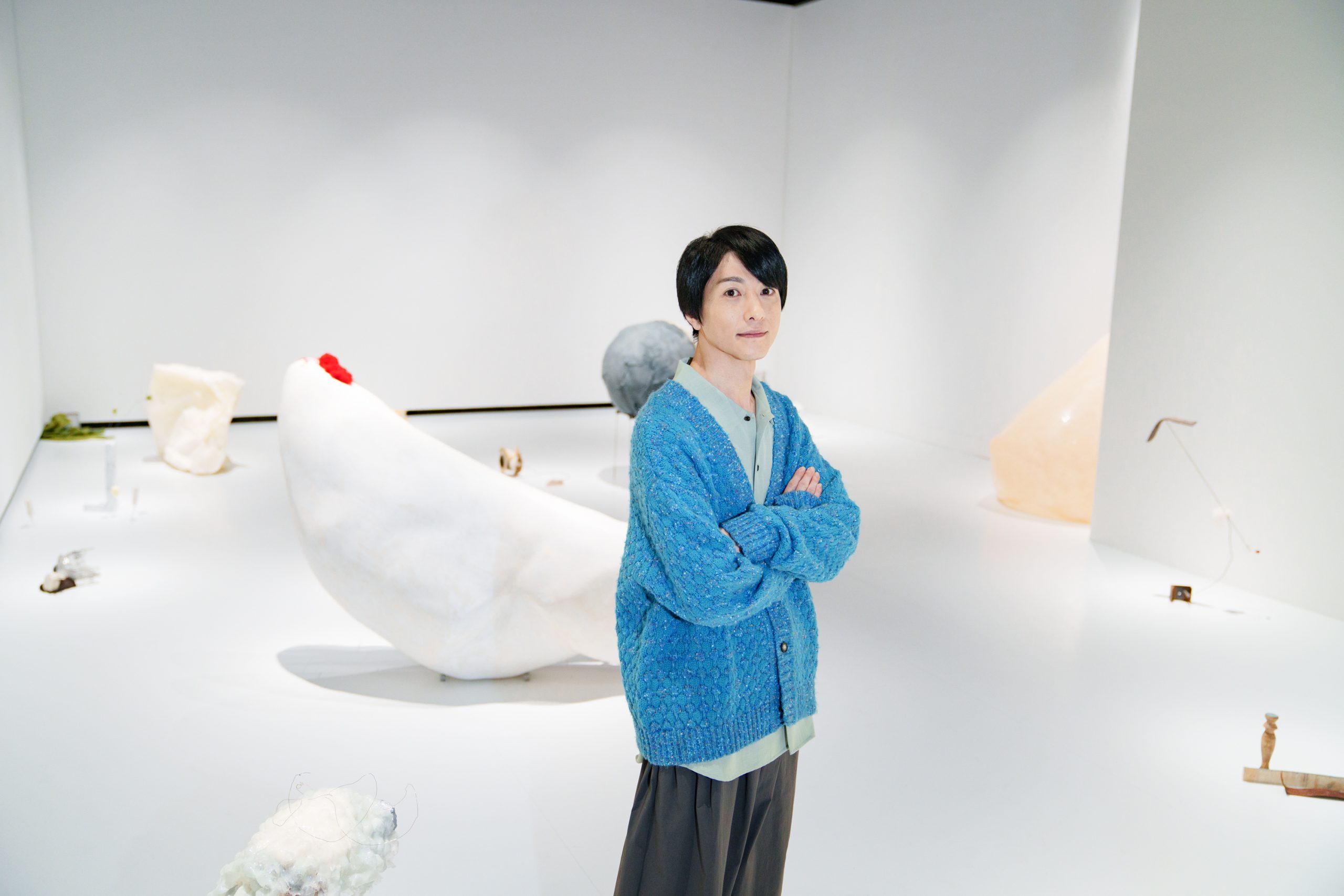 Installation view of 30 Ways to Go to the Moon by Nobuko Tsuchiya
Installation view of 30 Ways to Go to the Moon by Nobuko Tsuchiya
Tasaka: And the last work we’ll see today is Nobuko Tsuchiya’s 30 Ways to Go to the Moon, the title of which was used as the theme for this exhibition. Tsuchiya repeatedly uses this same title for an ongoing installation in which she collects various types of waste and other discarded materials and combines them in different ways based on the inspiration she draws from the exhibition space.
Kanehira: Tsuchiya is not primarily a video artist, but when we look at her works, we find that they create many images in our minds. A big part of her work is how the viewer responds to it with “this is how it looks to me” or “this is how I see it.”

Suzuki: It’s strange how even haphazardly arranged works start to look like something the more you examine them. It makes you want to walk all around it and look at it from different angles. I rushed through this exhibition today, but really enjoyed it. Next time I’d like to take more time to fully appreciate it.
Tasaka: The Yebisu International Festival for Art & Alternative Visions has been gradually improving each year. Last year, we launched the Commission Project to select artists based in Japan and commission them to create moving-image works. On the third floor, Yu Araki and Kim Insook, Special Prize winners of last year’s edition of this program, present an exhibition linked to this year’s theme of 30 Ways to Go to the Moon. Only the works in this third-floor gallery will remain on display until Sunday, March 24, so please come back and take your time to view them.
 Installation view of Yebisu International Festival for Art & Alternative Visions 2024 Commission Project: “House to Home” by Kim Insook (left) and ROAD MOVIE by Yu Araki (right) Photo by Takaaki Arai
Installation view of Yebisu International Festival for Art & Alternative Visions 2024 Commission Project: “House to Home” by Kim Insook (left) and ROAD MOVIE by Yu Araki (right) Photo by Takaaki Arai
Suzuki: The works on the third floor will continue to be exhibited for more than a month after the festival ends. After seeing this exhibition, I felt that it’s essential to sit on a chair or sofa to really soak up the space with all your senses. Since I’m a stage actor, I want people to feel the importance of being in this type of space. So if you’re going to the Yebisu International Festival for Art & Alternative Visions next year or later, you’d better arrive early. There are so many works you’ll want to take your time looking at.
I resonated with the phrase “one-time nature,” which was key to this festival of moving images. The stage is also a “one-time” art form. Even if the performers do the same thing in the matinee and soirée shows, it won’t be in exactly the same form. That variation is what makes it interesting. And, of course, there was the theme 30 Ways to Go to the Moon. It was very thought-provoking for me because so many aspects of my own career are based on the audience’s imagination. I feel inspired to go to more art museums in the future and contemplate all kinds of things.
Reporting and text: Moyo Urashima
Translation: Jena Hayama
<Hiroki Suzuki>
Photography: Ayumi Fujita
Hair & Makeup: AKI
Stylist: Miho Nakamura
Yebisu International Festival for Art & Alternative Visions 2024: 30 Ways to Go to the Moon Period: Friday, February 2 – Sunday, February 18, 2024 (15 days) *The festival has finished. *The Commission Project (3rd floor exhibition gallery) remains open until Sunday, March 24 Time: 10:00–20:00 (until 18:00 on Feb. 18) *The Commission Project (Tuesday, February 20 – Sunday, March 24) is open from 10:00–18:00 (open until 20:00 on Thursdays and Fridays only) and closed on Mondays. *Last admission is 30 minutes before closing. Venues: Tokyo Photographic Art Museum, Center Square of Yebisu Garden Place, affiliated local facilities, galleries, etc. Admission: Free *Admission is charged for some programs (such as screenings, etc.)
PROFILE
-
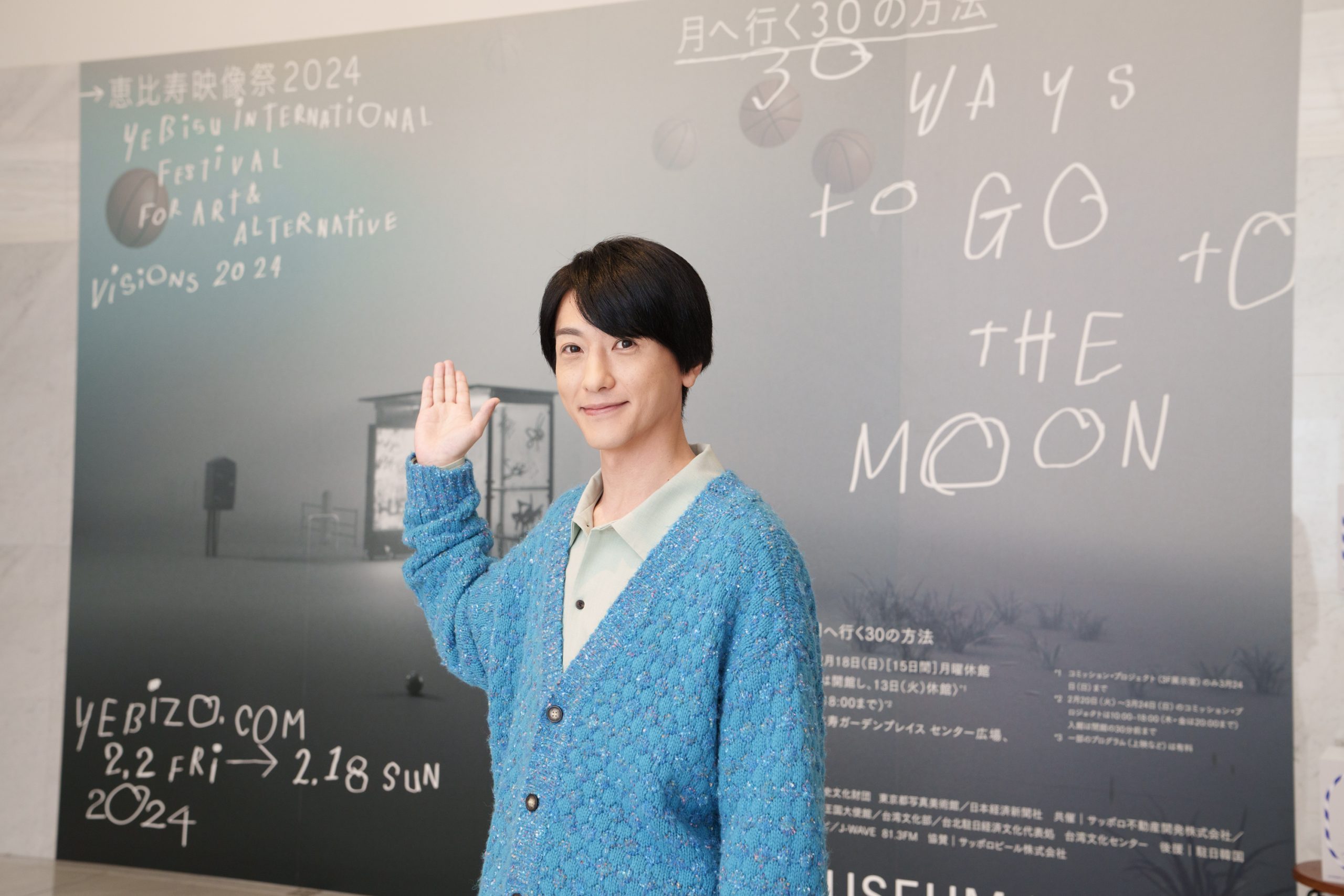
Hiroki Suzuki
Suzuki was born in Osaka in 1985. He debuted as an actor in the 2007 TV drama series Fuma no Kojiro. In 2008, he landed his first lead role in Saiyuki Kagekiden – Go to the West –. Since then, he has played a variety of roles in movies, TV dramas, and especially stage plays. Suzuki has appeared in many popular stage play series, including Touken Ranbu, Yowamushi Pedal, and Yu Yu Hakusho. His most recent major performances include “BAKUMAN.” THE STAGE (2021) and Musical SPY x FAMILY (2023). He is scheduled to appear in the stage play PSYCHO-PASS “Virtue and Vice 3” in March 2024.
Interview Back Number
- Actor Hiroki Suzuki visits the Yebisu International Festival for Art & Alternative Visions 2024. What inspired the theme 30 Ways to Go to the Moon?
- A Botanical Tour of the Tokyo Metropolitan Teien Art Museum, Now Celebrating Its 40th Anniversary
- Journey Back in Time to Ginza during the Meiji Period to Discover the Birth of Modern Tokyo! Now Available: “Hyper Edohaku Ginza: From Edo to Tokyo,” the Latest Version of the Edo-Tokyo Museum’s Smartphone App
- Special Interview:Asao Tokolo
- Special Interview : Li Kotomi
- Special Interview : Mika Ninagawa
- Special Interview : Shoko Haruki & Katsuya Taniguchi
- Special Interview : Kyoichi Tsuzuki
- Special conversation : Jun Miura & Akihide Mochizuki
- Special Interview : Contemporary Art Team [mé]
- Special Interview : Kishin Shinoyama
- Special Interview : Daito Manabe and Motoi Ishibashi (Rhizomatiks)
- Special Interview : ONO Kazushi
- Special Interview : Contemporary Art Team [mé]
- Special Interview : Shingo Katori
- Special Interview : Mizuki Yamamoto
- Special Interview : Tomoe Shinohara
- Special Interview : Takahiko Kozuka
- Special Interview : Kosaka Daimaou
- Special Interview : Rei Dan
- Special Interview : Shihori Kanjiya




